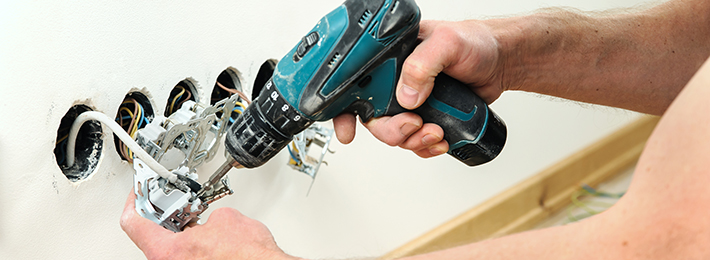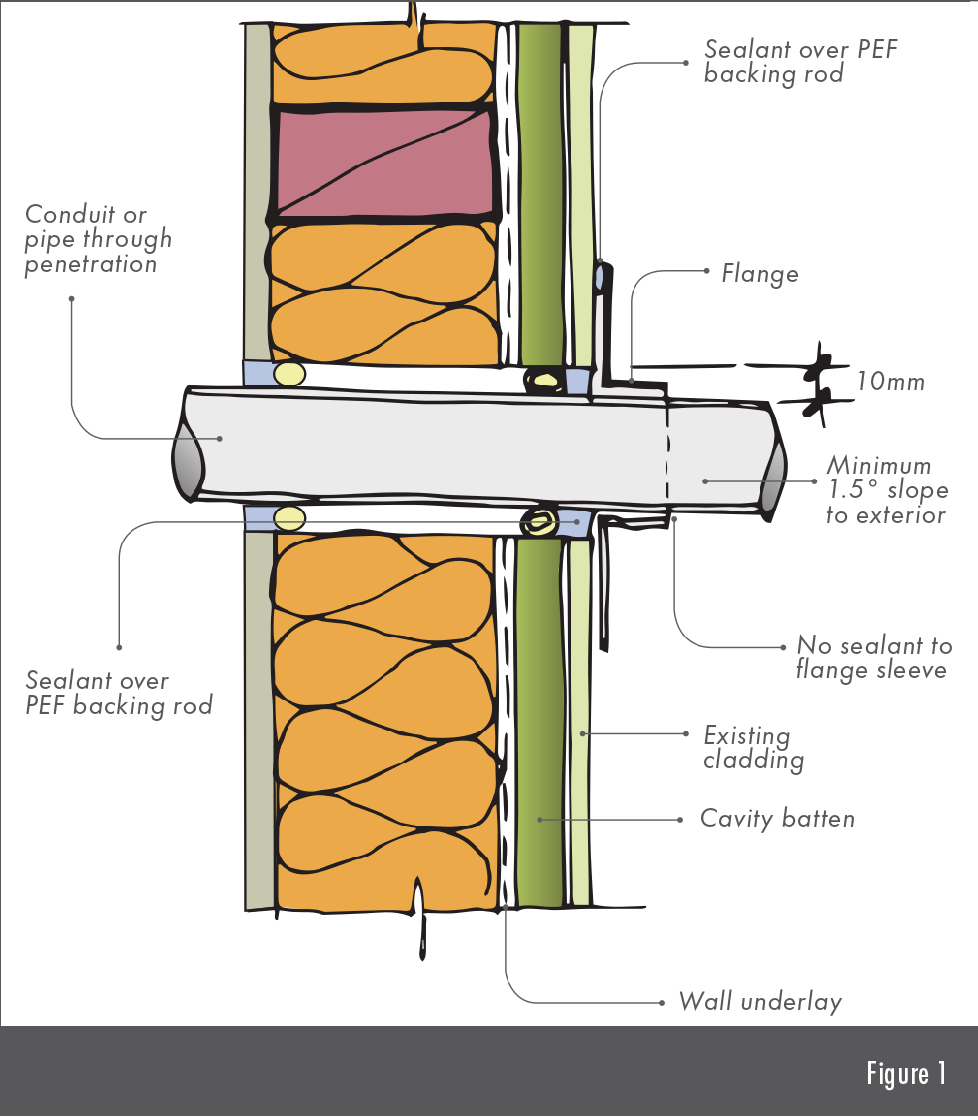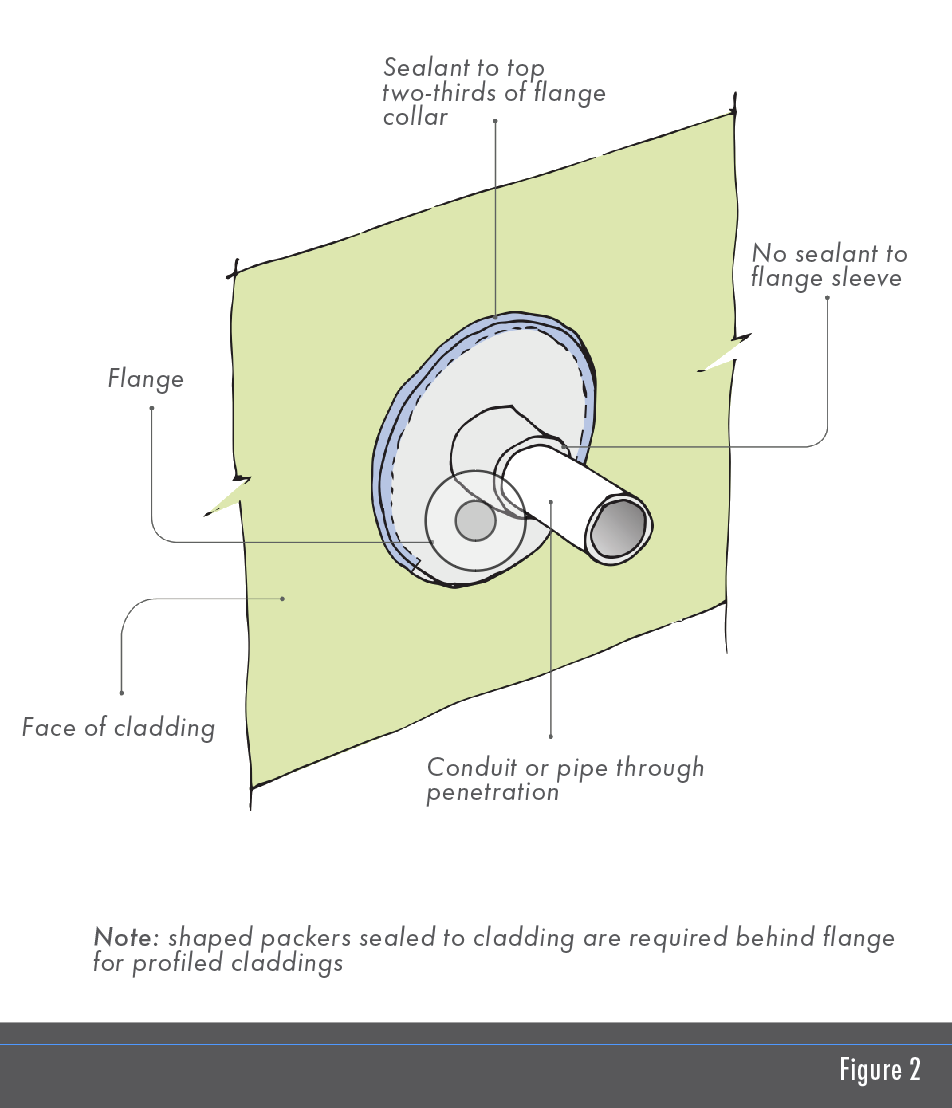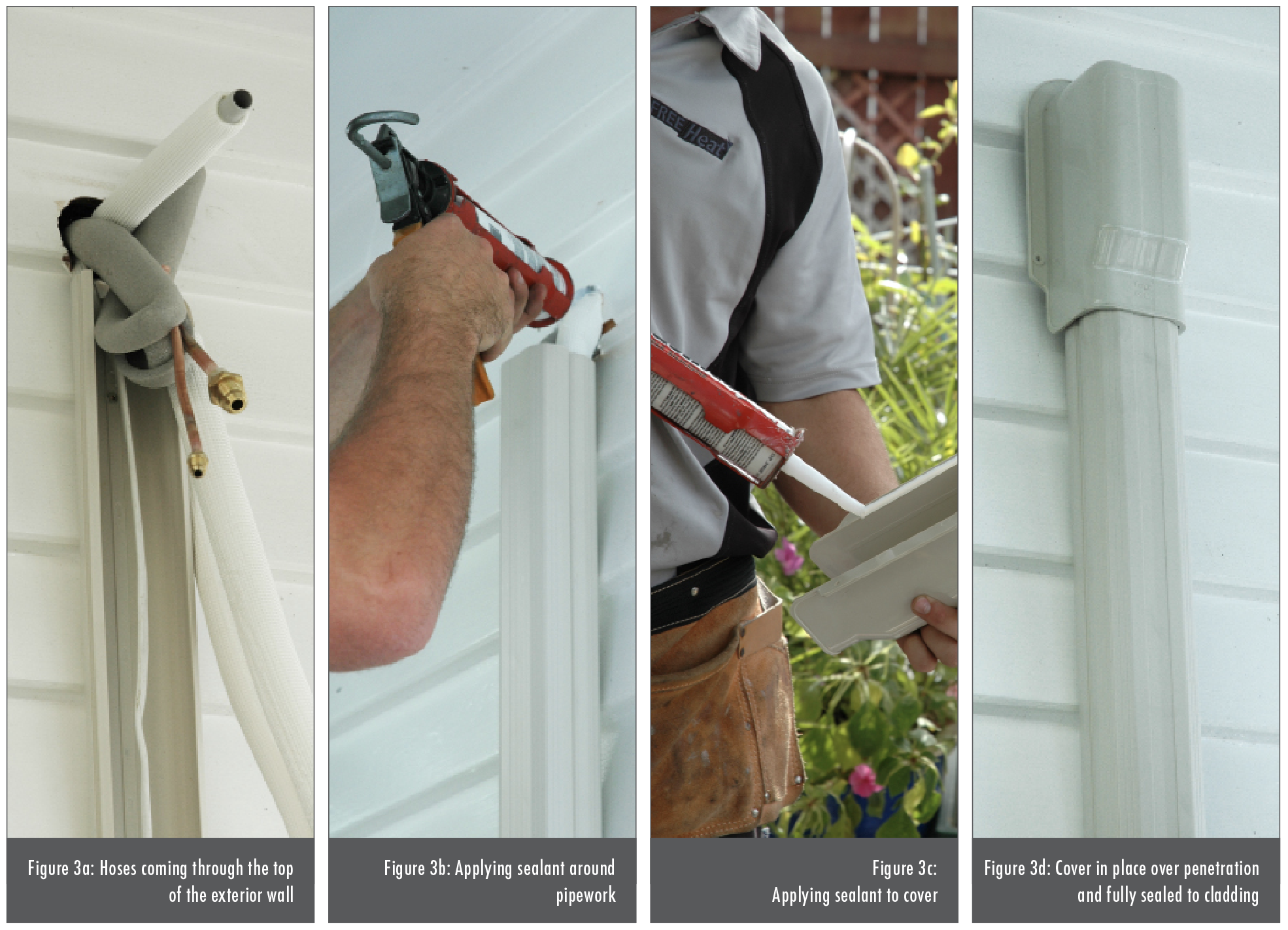Penetrations in existing walls
31 Jan 2017, Featured, Prove Your Know How, Technical

When a penetration is required through the cladding of an existing building, effective sealing and weatherproofing is more difficult than when a penetration is incorporated during construction
For new construction, guidance on sealing and weatherproofing penetrations through external wall claddings is provided in the Acceptable Solution E2/AS1 to NZBC clause E2 External moisture.
Many things require new penetrations and occasionally a penetration may need to be made through an existing wall cladding. Examples include:
- Installing a heat pump, clothes dryer or range hood.
- New plumbing or drainage pipes.
- TV, phone or data cabling.
In these situations, effective sealing and weatherproofing is more difficult to achieve.
Minimise the risk
Things can be done, however, to mitigate the risk of water and air leakage created by penetrations through existing wall claddings.
Removing cladding is best, but difficult. If possible, the best solution is to remove enough of the external cladding to be able to access and fully seal the wall underlay around the penetration – in accordance with E2/AS1.
This is often not feasible. When a penetration must be made through external wall cladding, locate the penetration where possible in a sheltered position such as:
- Immediately under or through the eaves.
- Under a veranda or porch.
- On the sheltered side of the building.
If it is not possible to locate an outlet in a sheltered part of the building, the penetration should be protected by a cowl or shield. By reducing the amount of water passing over the penetration, the risk of water entering the opening is also reduced.
Slope opening to the exterior
Drill upwards from the exterior when cutting a penetration through the exterior cladding, so that any water that gets in the hole is able to drain out again (see Figure 1). The CANZ publication CP 01:2014 Code of practice for weathertight concrete and concrete masonry construction recommends that a penetration through an external wall has a minimum downward slope of 1.5° to the exterior.
Seal around pipe penetrations
Pipes through a penetration should be firmly fixed, so the pipe does not move within the opening. Apply sealant over a PEF backing rod around the opening, cover with a flange and seal around the top two-thirds of the flange collar (see Figures 1 and 2).
Do not apply sealant to the flange sleeve, as the sleeve will allow any water that gets past the flange to drain to the outside. As well as protecting against water entry, the flange will also protect the sealant around the opening from UV radiation or weathering. Seal around pipes or sleeves where they penetrate interior linings.
Install cabling in a conduit
Cabling and other flexible materials may be subjected to wind movement. This is likely to cause any sealant around the opening to be damaged and eventually fail.
Installing all cabling and flexible material in a conduit when retrofitting through existing cladding means the conduit can be sealed and flanged in the same way as the rigid pipe penetration. Where wires are not in a conduit:
- Drill upwards through the cladding.
- Protect with an exterior deflector sealed to cladding.
Relocating meter boxes
If a meter box needs to be relocated to the outside of the building, rivet a 30×30mm angle to all sides of the meter box and flash over the angle along the top edge in a similar way to the solution shown in E2/AS1 Figure 68. Alternatively, a relocated meter box may be installed behind a window panel so it is isolated completely from the weather.
When to avoid penetrations
Avoid penetrations through a flat or low-pitched roof or deck, as these are more difficult to waterproof. If a penetration is required, another location for the penetration should be found.
Retrofitting heat pump pipework
Figures 3(a)-(d) show the installation of heat pump pipework into an existing house. The penetration for the pipework through the external cladding is high on the external wall and is under a veranda. The hole is filled with sealant around the pipework. The proprietary cover has sealant applied to the top edges while the bottom is left open to allow any water that may get in to drain out again.
Register to earn LBP Points Sign in
2 Comments
Leave a Reply
You must be logged in to post a comment.







Good quiz
good one